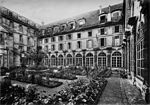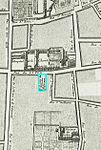Sciences Po

The Paris Institute of Political Studies (French: Institut d'études politiques de Paris), commonly referred to as Sciences Po Paris or Sciences Po (IPA: [sjɑ̃s po]), is a semi-public grande école and grand établissement in Paris, with additional campuses in Dijon, Le Havre, Menton, Nancy, Poitiers, and Reims, in France. Sciences Po is a specialised institute for the study of social sciences, offering courses and research in political science, history, economics, law, and sociology. Sciences Po originates in the École libre des sciences politiques, a private school of higher learning founded in Paris in 1872 by sociologist Émile Boutmy. Boutmy aimed at modernising education for French civil servants, by giving additional lectures to classics graduates, which had historically dominated the profession. Throughout the 20th century, it acquired a substantial role in educating the growing number of people entering civil service in the Third to Fifth Republic. In 1945, the school was refounded as a semi-public Institut, after criticism of the attitude of its staff during WW2 and subsequent calls for its closure.After a reform in 1985, Sciences Po began offering full degrees in the social sciences as a primary education for its students. Since the mid-1990s, Sciences Po’'s curriculum has been substantially reformed to broaden its focus and to prepare students for the private sector as well as civil service, and has in accordance with the Bologna process implemented bachelor's and master degrees as its education model. The Sciences Po curriculum has been expanded to social sciences such as economics, law, and sociology, in addition to its original curriculum in political science and history. As of 2021, 80% of Sciences Po graduates choose careers in the private sector.The institute is a member of the Association of Professional Schools of International Affairs (APSIA) and the Sorbonne Paris Cité group.
Excerpt from the Wikipedia article Sciences Po (License: CC BY-SA 3.0, Authors, Images).Sciences Po
Rue de Grenelle, Paris 7th Arrondissement (Paris)
Geographical coordinates (GPS) Address Website External links Nearby Places Show on map
Geographical coordinates (GPS)
| Latitude | Longitude |
|---|---|
| N 48.854172222222 ° | E 2.3284694444444 ° |
Address
Institut d'Études Politiques (Sciences Po)
Rue de Grenelle
75007 Paris, 7th Arrondissement (Paris)
Ile-de-France, France
Open on Google Maps









